Onboarding New Clean Energy & E-mobility Team Members Your Step-By-Step Guide
Employee onboarding is not a new concept in the Clean Energy & E-mobility space. Introduced in the 1970s, onboarding is the art of welcoming new staff members into your team and acclimatising them to your organisation's culture, processes, and expectations.
Effective onboarding strategies are among the best ways for companies to set their team members up for success, enhance productivity, and improve company culture. Several studies indicate that great onboarding can improve employee retention by up to 82%, as Glassdoor shared in a recent post, cementing a sense of loyalty in your staff from the moment they walk through the door.
Unfortunately, onboarding is still an often overlooked and misunderstood process for many business leaders. There’s more to preparing your staff to thrive in your company than spending a week getting them up-to-speed on the Clean Energy & E-mobility tools and technology you use.
A comprehensive onboarding process can influence the entire journey your staff members go through with your business.
The Evolution of Employee Onboarding
Although the concept of employee onboarding has been around for some time, aspects of the experience have changed in recent years. For instance, thanks to the rise of remote and hybrid working, Onboarding no longer has to take place “within” the office environment. Onboarding strategies can occur virtually, in person, or in a combination of different ways.
Additionally, the value of onboarding has increased in recent years as skill shortages have grown in the Clean Energy & E-mobility environment, and employee priorities have evolved. Onboarding is a guaranteed way for companies to improve their reputation with candidates, demonstrate an investment in employee care, and pave the way for long-term loyalty.
Today employees are looking for more supportive leadership, and many expect to experience an inclusive and respectful company culture from day one, or else they’ll consider looking for work elsewhere.
How to Build an Effective Onboarding Strategy
A good onboarding strategy could make or break a company's chances of success in an environment where competition for Clean Energy & E-mobility talent is greater than ever. Onboarding improves retention, enhances a company’s professional brand, and even boosts new hire productivity by up to 50%.
So, how can business leaders ensure they’re getting started on the right track?
1. Consider a Preboarding Strategy
Making the right first impression on a new Clean Energy & E-mobility hire is crucial to cultivating employee loyalty. While onboarding strategies can last over a period of months or years, companies can double down on welcoming their candidates into the business in the initial days with a preboarding effort.
Preboarding essentially acts as a preliminary step before the onboarding journey begins. As soon as a candidate accepts a role offer, business leaders and managers should reach out and thank them for being a part of the team. Sending a quick email or arranging an initial meeting so team members can get to know the people they will be working with in advance can streamline the onboarding process.
During the preboarding stage, ensure new Clean Energy & E-mobility team members have all the information they need to thrive in their new position. Introduce them to their colleagues and let them know how to communicate with other staff members. You can also include useful resources, like videos showing information about your company, its background, and its vision.
2. Make Every Hire Feel Included
One of the biggest benefits of implementing an onboarding strategy is that it helps embed new staff members into the company's culture and makes them feel like a valuable part of the team. Onboarding is not just about taking staff on a tour of the office or teaching them how to use new tools; it encompasses making people feel included and respected.
In recent years, focusing on inclusion as part of the onboarding process has become extremely important for Clean Energy & E-mobility companies.
Employees continue to prioritise excellent company culture when choosing new roles. Around 64% of employees even say evidence of diversity and inclusion in the workplace influences their decisions to accept job offers and stay with a company.
Companies can champion inclusion by asking new hires about the preferred pronouns and names they want to be used for them throughout the office. Paying attention to new hires' communication and working styles and respecting their boundaries can be extremely useful too.
3. Customise the Onboarding Journey
In most companies, specific parts of the Clean Energy & E-mobility onboarding journey will be very similar for virtually every role. For instance, every team member will want a chance to get to know their colleagues, and they’ll all need to be introduced to things like health and safety guidelines.
However, the exact steps of the onboarding process can also vary slightly, depending on the nature of the role in question. For instance, it might be valuable for a remote employee to be offered a virtual office tour and set up a group video meeting. Hence, they get to know their team members since in-person interactions might not be possible.
Companies can also consider adjusting their onboarding strategies based on each employee's preferences. Some new candidates might want to learn how to thrive in the business by shadowing a mentor or peer, while others may like to learn things in their own time with videos and online training resources.
4. Work on Building Long-Term Plans with Your New Hire
Many companies still assume employee onboarding stops after an employee has met all of their colleagues and started working on new projects. However, onboarding can last several months as an employee develops into the role.
Building plans for development and growth with new employees, as they continue to transition into your team, is a great way to help them see a future with your Clean Energy & E-mobility company.
When a new employee enters the team, ask about their goals and what they want to accomplish with the business in the short and long term. Work together on plans for training and development, and regularly catch up with each team member to determine if they’re progressing towards their targets.
5. Learn and Evolve
Finally, one of the best ways companies can ensure their onboarding process is effective is to gather feedback from their team's Clean Energy & E-mobility staff members. Asking new employees to share how they feel about the onboarding journey and comment on any issues they’ve faced will give you an excellent insight into what you need to preserve and improve.
The feedback you collect from your new hires will help you update and enhance your onboarding strategy as you bring new employees into the workplace. You can monitor staff members’ performance and productivity changes after participating in certain onboarding activities.
It’s also worth remembering that even the best onboarding strategies can struggle to deliver results if you’re not hiring the right staff members in the first place. Paying attention to which team members thrive and falter in your business could help you update your hiring strategy, so you know what characteristics you should be looking for in candidates.
Sharing these insights with your Clean Energy & E-mobility recruitment team will help them to pinpoint the candidates most likely to benefit from your approach to onboarding.
Sharn Lalkiya
Founder/Managing Director - TechWaves Recruitment Clean Energy & Emobility
At TechWaves Recruitment - Clean Energy & E-mobility, we have been helping start ups and those going through growth to acquire talent and job seekers find their ideal roles in the Clean Energy and E-mobility sector. Call us at 0247 5099567 or email us on help@techwavesrecruitment.co.uk.

